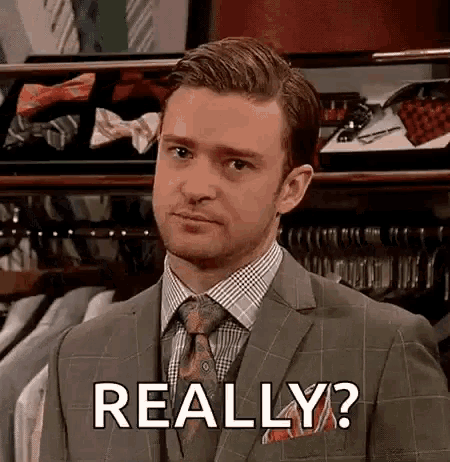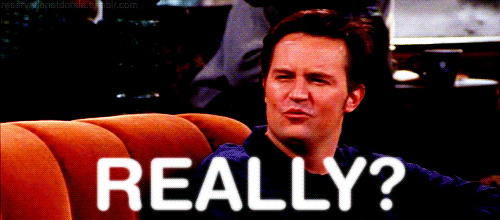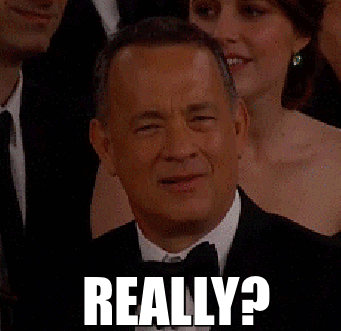What Really Happened - America's Wild West Episodes
The American Wild West often conjures up images of dusty towns, quick-draw duels, and lone riders silhouetted against a setting sun. These pictures, often painted by popular stories and films, have shaped how many people view this period of history. It is a time that feels both familiar and far away, full of larger-than-life characters and dramatic events. But what if much of what we think we know about this era, about what really happened America's wild west episodes, is more fiction than fact?
Many stories from that time, you know, have been passed down and changed a bit, sometimes a lot, over the years. They grew into grand tales, often making things seem more exciting or simpler than they truly were. We see these tales in books, on screens, and even in how we talk about that period, giving us a very particular idea of what life was like for people then. So, it is worth a moment to consider if those tales show us the actual truth or just a good story.
This article aims to peel back some of those layers, to get closer to the real experiences and everyday lives that unfolded during that famous era. We will look at what the word "really" means in this context: the actual, genuine events, not just the popular versions. It is about exploring the true nature of things, the way they were, and not just how they appeared in the grand narratives we have come to accept about what really happened America's wild west episodes.
- Rolling Stones Tops
- Days Of Our Lives Cast 1980
- How Tall Is Billy Dee Williams
- Lew Hayward
- Vance Booed At Kennedy
Table of Contents
- The Wild West - Was It Really Like the Movies?
- Gunfights - More Rare Than You Think in America's Wild West Episodes
- What Really Happened to Lawmen and Outlaws?
- Cowboys - Hard Work, Not Just Heroics in America's Wild West Episodes
- The Role of Women - Were They Really Just Saloon Girls?
- Native American Experiences - A Different Story in America's Wild West Episodes
- The Gold Rush - What Really Drove People West?
- The End of the Trail - How Did America's Wild West Episodes Conclude?
The Wild West - Was It Really Like the Movies?
The image of the Wild West we carry around, the one with heroic sheriffs and villainous bandits, often comes straight from Hollywood. It is a powerful vision, full of dramatic tension and clear lines between good and bad. But if we consider what really happened America's wild west episodes, the actual experiences were, in many ways, quite different from those big screen portrayals. Life on the frontier was often a grind, a daily struggle for survival and a slow build of communities rather than a constant series of shootouts. People who lived there faced challenges of weather, isolation, and simply making a living from the land. It was, in some respects, far less glamorous and much more about persistence.
For instance, towns were not always lawless places where anyone could get away with anything. Many settlements, even small ones, quickly tried to set up some form of order, usually with local citizens stepping up to create rules and keep the peace. This meant that while dangers certainly existed, a lot of people were just trying to live their lives, build homes, and establish businesses. The stories that gained fame were often the exceptions, the unusual occurrences, rather than the everyday experiences of what really happened America's wild west episodes. So, the quiet, hard work of countless individuals rarely makes it into the exciting tales we hear.
Gunfights - More Rare Than You Think in America's Wild West Episodes
When you picture a Wild West gunfight, you probably see two people standing in a dusty street, drawing their pistols in a slow, dramatic showdown. That kind of scene, however, was nearly unheard of in the actual historical record. Most disputes, even serious ones, did not end in such a stylized way. If violence did occur, it was often quick, messy, and far from the honorable duels depicted in popular stories. People generally tried to avoid direct confrontation, knowing the risks involved were very high for everyone.
- Skarsg氓rd Family Tree
- Kendrick Lamar A Chain
- Human Touch Rick Springfield
- Is Kathy Griffin Gay
- Uranus In Aquarius Woman
Guns were certainly present, but they were more often tools for hunting or protection against animals than weapons for daily human conflict. Carrying a firearm in town was often restricted by local ordinances, meaning many people had to check their weapons at the edge of town or at the saloon door. This helped keep things a little calmer than the movies suggest. The idea that everyone walked around armed to the teeth, ready for a fight at any moment, is just a bit of an exaggeration of what really happened America's wild west episodes. In fact, most folks preferred a quiet drink to a deadly encounter.
What Really Happened to Lawmen and Outlaws?
The figures we remember most from the Wild West are often the lawmen, like Wyatt Earp, and the outlaws, such as Billy the Kid. Their stories have been told and retold, sometimes making them seem like pure heroes or pure villains. But the truth, as it usually is, was far more complicated for what really happened America's wild west episodes. Many lawmen were not always the shining examples of justice we might imagine. Some had checkered pasts themselves, or blurred the lines between upholding the law and pursuing their own interests. Their jobs were tough, often thankless, and paid very little. They dealt with a mix of petty crime and serious threats, usually without much backup.
Outlaws, too, were often not the romantic figures of rebellion or the masterminds of grand schemes. Many were young, desperate, or simply made bad choices. Their lives were typically short and brutal, filled with constant fear of capture or betrayal. They did not live glamorous lives of freedom, but rather existed on the fringes, constantly moving and often suffering from hunger and exposure. The idea of a "gentleman bandit" was pretty much a myth; most were just trying to survive, usually through violent means. So, the reality of their existence was far from the adventure often shown in books and films.
Cowboys - Hard Work, Not Just Heroics in America's Wild West Episodes
The cowboy, riding across the plains, is a powerful symbol of the Wild West. Yet, the actual life of a cowboy was less about daring adventures and more about incredibly hard, monotonous work. These were working men, often young, who spent long hours in the saddle, driving cattle across vast distances. Their days were filled with dust, heat, cold, and the constant threat of stampedes or bad weather. They were responsible for the well-being of thousands of animals, and their pay was not particularly good for such demanding labor. It was a tough existence, requiring great endurance and little complaint.
Furthermore, the cowboy population was much more diverse than often portrayed. Many cowboys were African American, Mexican, or Native American, playing a crucial role in the cattle industry. They worked side by side, facing the same challenges regardless of their background. Their daily routines involved branding, mending fences, and dealing with all sorts of animal care, which is that kind of work that rarely gets highlighted in popular stories. The romantic image of the lone, white hero on horseback is a simplification of what really happened America's wild west episodes, ignoring the rich mix of people who made up the cowboy workforce.
The Role of Women - Were They Really Just Saloon Girls?
When thinking about women in the Wild West, a common image that comes to mind is that of the saloon girl or dance hall performer. While some women certainly held these jobs, their roles in the westward expansion were far more varied and significant. Women were homesteaders, building homes and farms from scratch, often enduring immense hardship alongside their families. They were teachers, bringing education to new communities, and business owners, running stores, hotels, and laundries. Their contributions were absolutely vital to the creation and survival of frontier settlements, sometimes even more so than the men's efforts.
Many women took on responsibilities that might surprise us today, managing households, raising children, and contributing directly to the family income in countless ways. They were doctors, nurses, and spiritual leaders, providing essential services where trained professionals were scarce. The idea that women were merely decorative or confined to certain limited roles is a big distortion of what really happened America's wild west episodes. They were active, resilient participants in shaping the new territories, showing remarkable strength and adaptability in often very difficult circumstances.
Native American Experiences - A Different Story in America's Wild West Episodes
The story of the Wild West is incomplete without a deeper look at the experiences of Native American peoples. Their perspective, often overlooked in mainstream narratives, is central to what really happened America's wild west episodes. For centuries, these lands were their homes, and their cultures, traditions, and ways of life were deeply connected to the environment. The arrival of settlers and the push westward brought about immense disruption, conflict, and devastating changes for indigenous communities. Their struggle was one of survival against overwhelming odds, as their lands were taken and their traditional ways were threatened.
The narrative of "settling" the West often ignores the displacement and violence that Native Americans faced. Treaties were broken, resources were depleted, and their populations suffered greatly from disease and warfare. Many tribes fought bravely to protect their homes and heritage, showing incredible resilience in the face of relentless pressure. Their stories are not just about conflict, but also about enduring cultural strength, adaptation, and the persistent effort to maintain their identities. Understanding their experiences provides a much fuller, and sometimes painful, picture of this historical period.
The Gold Rush - What Really Drove People West?
The allure of gold certainly played a part in drawing people westward. The thought of striking it rich overnight was a powerful motivator, sparking rushes to places like California and the Black Hills. However, the prospect of finding gold was not the only, or even the main, reason why so many people chose to leave their established lives and head into the unknown. For a great many, the promise of free land, or at least very cheap land, was a far more practical and lasting attraction. The Homestead Act, for example, offered people the chance to own their own piece of earth, a dream for many who had little hope of land ownership back east. This opportunity was a very significant draw for families and individuals alike.
Beyond land and gold, people moved west for a variety of personal reasons. Some sought a fresh start, a chance to escape debts, difficult pasts, or crowded cities. Others were looking for new business opportunities, as towns sprang up and created demand for various goods and services. The desire for adventure, a sense of freedom, or simply the hope of a better life also pulled many across the continent. So, while the glint of gold was exciting, the broader promise of new beginnings and tangible prospects was often what really happened America's wild west episodes, driving this massive migration.
The End of the Trail - How Did America's Wild West Episodes Conclude?
There was no sudden, dramatic end to the Wild West, no single event that declared its closing. Instead, it was a gradual process of change and settlement. As more people moved west, infrastructure developed. Railroads connected distant regions, making travel and trade easier. Telegraph lines allowed for faster communication, and towns grew into cities with more organized governments and services. The open ranges began to shrink as fences went up and land was divided for farming and ranching. This slow shift meant that the wild, untamed aspects of the frontier slowly faded away. It was, in a way, just a natural progression of things.
The establishment of law and order became more formal, with state and federal governments extending their reach. The days of isolated communities relying solely on local vigilance gave way to more structured legal systems. The opportunities that once drew adventurers and risk-takers became more regulated, turning into stable industries. The "wildness" of the West was slowly tamed by the forces of progress and population growth, transforming it into a more settled and integrated part of the nation. This slow fading, rather than an abrupt conclusion, is what really happened America's wild west episodes, bringing that unique era to a close.
The Wild West, as we have explored, was a time and place far more complex and nuanced than the popular stories often suggest. The reality of gunfights was less dramatic, and the lives of lawmen and outlaws were often grittier and less glamorous. Cowboys were hardworking individuals from diverse backgrounds, and women played truly vital roles beyond the saloon doors. The experiences of Native Americans were marked by immense struggle and resilience, a crucial part of the historical truth. Finally, the push westward was driven by a mix of hopes for land and new beginnings, not just the lure of gold. The era did not end with a bang, but rather a slow, steady transformation as the frontier became more settled.
- Lawrence D Piro
- Zoe Skyler
- Johanna Mason Nude
- Shante Broadus Laurie Holmond
- Plane Crash Honolulu Airport

Justin Timberlake Really GIF - JustinTimberlake Really Stare - Discover

Really? - Reaction GIFs

Tom Hanks Saying “Really?” | Gifrific